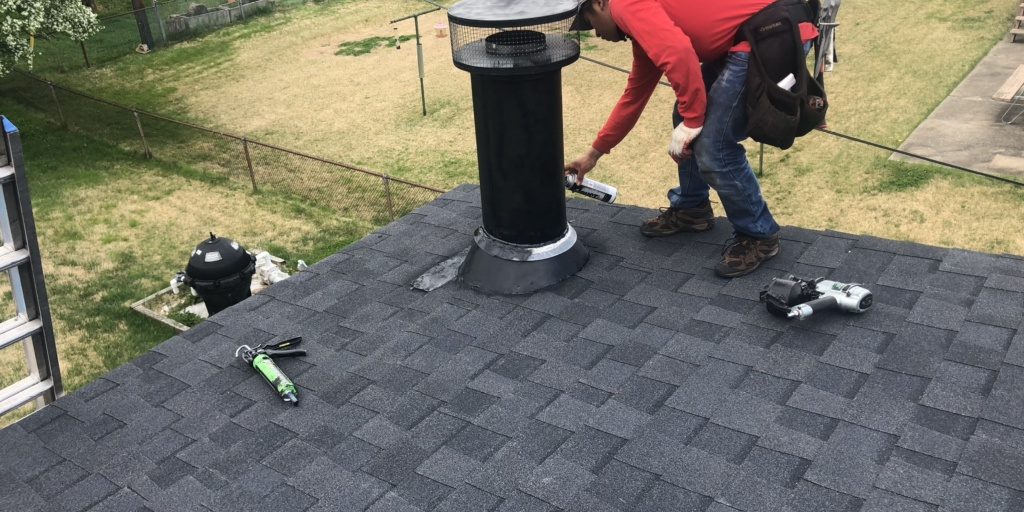To maintain an energy-efficient home, proper ventilation is a must – and that includes your roofing ventilation. But different homes have different needs, and how you ventilate your home largely depends on the climate in which you live. For this reason, your potential roof ventilation needs will depend on the geographic location of your home. Let’s take a look at the differences:
Roofing Ventilation Needs In . . .
- Warm climates. If you live in an area that experiences warm weather all year round, the purpose of your roof ventilation system is to avoid taxing your air conditioning system by letting the heat escape. Ventilation can literally “take the heat off,” so your air conditioner does not need to work so hard.
- Cold Climates. Meanwhile, in a cold climate, your roof ventilation system actually needs to keep your roof cool in the coldest months so that rain – as well as melting snow and ice – don’t melt too quickly and form ice dams. This is important because ice dams can then leak into your home, damaging the interior and eventually resulting in a buildup of mold.
- Mixed Climates. If you live in an area that experiences both very hot and very cold temperatures – depending on the season – you will need a roof ventilation system that is somewhat of a “jack of all trades” – to keep the roof cool during the winter and allowing heat to escape during the summer.
In order to address these needs, there are two main types of vents you may need for your roof: intake and exhaust vents. While they serve different purposes, both work to keep your home temperature and energy-efficient. The following list describes the difference between the two types of vents, as well as specific varieties of intake and exhaust vents.
Intake Vents
Intake vents “draw cooler outside air into the home. As cooler air comes in, it forces the warmer air to keep rising up and out” (homedepot.com). Three common intake vents include soffit vents, drip edge vents, gable vents, and ridge vents.
- Soffits and Drip Edge Vents. These vents are installed in your roof’s soffits or eaves, to help increase airflow. If you don’t have a roof soffit, a drip edge vent is another option, as these vents extend a few inches off the edge of your roof to provide ventilation that is similar to a soffit vent.
- Gable Vents. Gable vents are positioned on the exterior wall of your attic, to allow for improved airflow and circulation. They come in a variety of shapes and colors in order to match the color of your home exterior siding, stucco, etc. These dual-purpose vents can act as an exhaust vent, as well as an intake vent.
Exhaust Vents
Exhaust vents allow heat and moisture to freely escape from your attic, and you’ll find these vents on the top of your roof. Common exhaust vents include ridge vents, static roof vents, and powered vents.
- Ridge vents. Ridge vents are “openings that run the entire length of your roof along the ridge — often visible only to a trained eye. [They are] hidden in plain sight and often camouflaged by specialty ridge shingles, [and] these are a particularly popular means of ventilation because they create no disruption to the roofline” (bobvila.com).
- Static roof vents. Unlike a ridge vent, a static roof vent will protrude a bit from your roof. However, they come in a variety of shapes and sizes, so you can select a style that looks right on your roof. Some static vents have a fan (or turbine) that will operate as soon as a breeze blows by.
- Powered vents. These vents turn on and off, depending upon the temperature in your attic. When they are running, they will effectively and efficiently draw heat out of your home.
When Your Roof Ventilation System Isn’t Working
So, how do you know whether or not your current roof is properly ventilating your home? Here are a few key considerations:
- Ice dams. As previously mentioned, ice dams are a huge red flag that your roof is not allowing the precipitation to easily roll off the roof surface. Among other possible causes, improper ventilation may be part of the problem.
- Extremely hot (or cold) attic spaces. If your attic is extremely hot in the summer and freezing cold in the winter, not only is insulation a concern but you might be running into ventilation issues as well.
- Moisture in the attic. If water and moisture are somehow seeping in – either via ice dams or other points of entry – you will need to determine if your roofing ventilation has some sort of leak that is allowing the moisture to get in.
- A hot roof. If you touch your roof on a sunny day and it feels as if the shingles are ready to melt, your roof may not be venting the air properly – and that means the heat is getting trapped inside your home. Not only will your home feel uncomfortably warm, but your air conditioner will need to work overtime to cool the home down.
Call Mid-Atlantic Remodeling Company for Roof Vent Repairs
Fortunately, even if you have any of the issues listed above, Mid-Atlantic Remodeling Company can help with any and all of your roofing ventilation systems needs – from gable and soffit vents to ridge, static, powered vents, and more.
Our professional staff prides itself on delivering quality products, installation, and service on time – and at an affordable price. To learn more, visit us today at https://midatlanticremodelingco.com/ or call (410) 918-0563.






